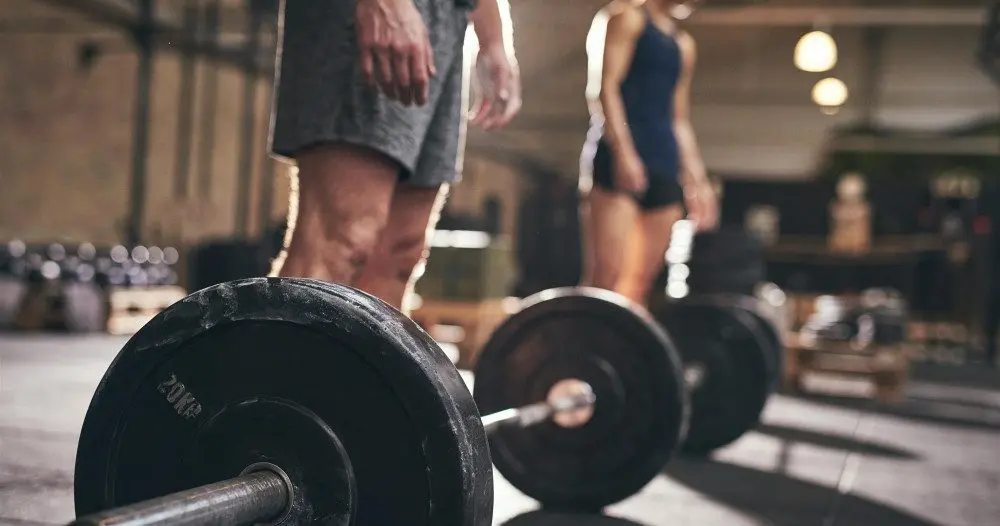Contents
The dry in bodybuilding: how to go about it?

Training during the dry
Many practitioners make the mistake of stopping training during the muscle-drying period or of focusing almost exclusively on cardiovascular exercises.
The muscle always adapts to the conditions of its environment. If it is not subjected to an effort corresponding to its strength or volume, it inevitably regresses. What is the point of maintaining a large muscle mass if it is useless?
Therefore, it is essential to maintain strength training when you want to keep your muscles. The period of muscle drying and the diet that corresponds to it does not allow to create and strengthen the muscles of the body, it is necessary to be satisfied with the same exercises, with the same intensities and the same loads. The diet period and the probable drop in muscle glycogen stock may nevertheless require additional rest between sets.
The cardio-type exercises are useful during the muscle drying phase provided they are used sparingly. This type of training will increase energy expenditure and unbalance the balance, a sine qua non for weight loss.
Be careful, however, long sessions will tend to consume muscle, which is not the objective of the practitioner: a duration of 40 to 60 minutes seems ideal when the session does not include weight training exercises. An active lifestyle is also encouraged during this phase. Everything is good to increase energy expenditure!
Food during the dry
To optimize the success of the diet, it is better to rely on gradual changes. It is not a question of not swallowing anything overnight while increasing the number of cardio-training activities. On the contrary, it would be the best way to lose muscle and gain fat.
It is generally advisable to plan 3 phases and carefully evaluate their effectiveness.
The attack phase. This phase inaugurates the drop in your food intake (up to 300 to 400 calories per day). This is not a drastic decrease but, coupled with moderate cardio-type activity, it should be sufficient to initiate weight loss. When it is seen on the scale, usually after 2 weeks, it is appropriate to move on to the second phase. It is estimated that a weight loss of about 500 grams per week is a first success.
The loss phase. Calorie intake should continue to decrease, but in a controlled and gradual manner. Weeks after weeks, it is necessary to reduce the caloric intakes according to the evolution of the weight. It is above all the proportion of carbohydrates that must decrease: maintaining muscle mass requires high protein requirements. The practitioner who wishes to build muscle mass should consume protein between 1,6 to 1,8 g / kg of body weight, while the one who wishes to maintain it should consume between 1.2 to 1.6 g / kg of body weight.
For a 90 kg individual, this therefore corresponds to 90 kg X 1.5g / kg = 135 g of protein per day.
The trick is to focus on proteins that are low in fat and low in simple carbohydrates:
- Poultry without skin
- Fish, seafood
- Lean meats (lean beef, pork tenderloin, horse, bison, deer, emu, moose)
- Eggs, low fat cheese (no more than 15% to 20% fat), low fat yogurt, low fat milk, whey protein, whey.
- legumes, tofu and soy drink.
The sharpening phase. When the weight no longer goes down, it is desirable to force the body to adapt to new conditions. It is generally recommended to slightly increase your carbohydrate intake on rest days, and to decrease them on training days (while slightly increasing protein intake).
The essential body assessment
It is essential to take your time when embarking on this type of project. What could be more frustrating than losing muscles so hard to acquire throughout the year in just a few weeks? To avoid this disillusionment, it is important to evaluate the effectiveness of the dry very regularly using a balance (ideally with impedancemetry), a compass to manually measure the fatty folds under the skin, a meter to measure the waist circumference… And if the evaluation of the body does not seem satisfactory, an adjustment of the training and the diet are essential. Keeping a dry notebook can be an appealing idea to promote success.
After the cut, you should normally have achieved your goal of having a lean body that has retained a large part of its muscle mass. The next logical step is to stabilize your weight, which requires finding a balance between maintenance training and healthy, natural nutrition that is more disconnected from the goals. Energy expenditure must now be identical to caloric intake. Again, it is the regular assessment of the body as well as listening to your signals of satiety and fatigue that play the biggest role in this quest for balance.









